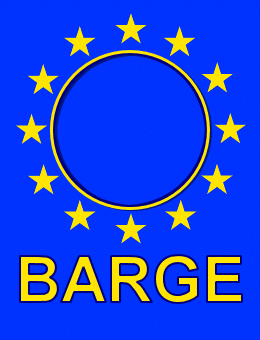BARGE member profile — Dr Iris Koch
 Dr Iris Koch
Dr Iris Koch
Royal Military College of Canada
PO Box 17000
Station Forces
Kingston
Ontario
K7K 7B4
Canada
Publications
Strawn, D G, Rigby, A C, Baker, L L, Coleman, M D, and Koch, I. 2015. Biochar soil amendment effects on arsenic availability to mountain brome (Bromus marginatus). Journal of Environmental Quality, 44, 1315–1320.
Koch, I, Dee, J, House, K, Sui, J, Zhang, J, McKnight-Whitford, A, and Reimer, K J. 2013. Bioaccessibility and speciation of arsenic in country foods from contaminated sites in Canada,Science of The Total Environment, 449, 1–8.
Koch, I, Moriarty, M, Sui, J, Rutter, A, Saper, R B, and Reimer, K J. 2013. Bioaccessibility of mercury in selected ayurvedic medicines. Science of The Total Environment, 454–455, 9–5.
Koch, I, Reimer, K J, Bakker, M I, Basta, N T, Cave, M R, Denys, S, Dodd, M, Hale, B A, Irwin, R, Lowney, Y W, Moore, M M, Paquin, V, Rasmussen, P E, Repaso-Subang, T, Stephenson, G L, Siciliano, S D, Wragg, J, and Zagury, G J. 2013. Variability of bioaccessibility results using seventeen different methods on a standard reference material, NIST 2710. Journal of Environmental Science and Health, Part A, 48, 641–655.
Koch, I, and Reimer, K J. 2012. Bioaccessibility extractions for contaminant risk assessment.
Koch, I, Moriarty, M, Sui, J, Gibson, B, and Reimer, K J. 2012. Insolubility of Cr2O3 in bioaccessibility tests points to requirement for a new human oral reference dose for trivalent chromium. Human and Ecological Risk Assessment: An International Journal, 18, 1292–1306.
Moriarty, M M, Koch, I, and Reimer, K J. 2012. Arsenic speciation, distribution, and bioaccessibility in shrews and their food. Archives of Environmental Contamination and Toxicology, 62, 529–538.
Meunier, L, Koch, I, and Reimer, K J. 2011. . Science of The Total Environment, 409, 2233–2243.
Saunders, J R, Knopper, L D, Koch, I, Reimer, K J. 2011. Inclusion of soil arsenic bioaccessibility in ecological risk assessment and comparison with biological effects . Science of The Total Environment, 412–413, 132–137.
Meunier, L, Walker, S R, Wragg, J, Parsons, M B, Koch, I, Jamieson, H E, and Reimer, K J. 2010. Effects of soil composition and mineralogy on the bioaccessibility of arsenic from tailings and soil in gold mine districts of Nova ScotiaEnvironmental Science & Technology, 44, 2667–2674.
Meunier, L, Wragg, J, Koch, I, and Reimer, K J. 2010. Method variables affecting the bioaccessibility of arsenic in soil. Journal of Environmental Science and Health, Part A, 44, 2667–2674.
Ollson, C A, Koch, I, Smith, P, Knopper, L D, Hough, C, and Reimer, K J. 2009. Addressing arsenic bioaccessibility in ecological risk assessment: a novel approach to avoid overestimating risk. Environmental Toxicology and Chemistry, 28, 668–675.
Bennett, J R, Kaufman, C A, Koch, I, Sova, J, and Reimer, K J. 2007. Ecological risk assessment of lead contamination at rifle and pistol ranges using techniques to account for site characteristics. Science of The Total Environment, 374, 91–101.
Kaufman, C A, Bennett, J R, Koch, I, and Reimer, K J. 2007. Lead bioaccessibility in food web intermediates and the influence on ecological risk characterisationEnvironmental Science & Technology, 41, 5902∧5907.
Koch, I, McPherson, K, Smith, Easton, P L, Doe, K G, and Reimer, K J. 2007. Arsenic bioaccessibility and speciation in clams and seaweed from a contaminated marine environment. Marine Pollution Bulletin, 54, 586–594.
Koch, I, Sylvester, S, Laib, V W-M, Owen, A, Reimer, K J, and Cullen, W R. Bioaccessibility and excretion of arsenic in Niu Huang Jie Du Pian pills. Toxicology and Applied Pharmacology, 222, 357–364.
Reimer, K J, Ollson, C A, and Koch, I. 2002. An approach for characterising arsenic sources and risk at contaminated sites: application to gold mining sites in Yellowknife, NWT, Canada. Biogeochemistry of Environmentally Important Trace Elements, 835, 166–180
